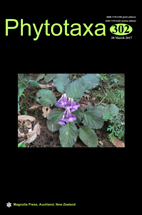Abstract
Beauveria araneola sp. nov., a fungus parasitic on spiders, was isolated from a spider at the Experimental Farm of the Institute of Entomology, Guizhou University, China; and described with morphological and phylogenetic evidences. This species differs morphologically from other species in the genus by its long slender denticulate rachis, cylindrical to ellipsoid conidiogenous cells, and ellipsoidal to globose conidia. Phylogenetic analyses based on three-locus (TEF, RPB1 and Bloc) data strongly support the distinction of this fungus within the genus. Based on the phylogenetic results, B. araneola shares some pleiomorphic traits with soil-borne or entomogenous members of the genus, and is likely to have jumped from soil or insect hosts to spider.

